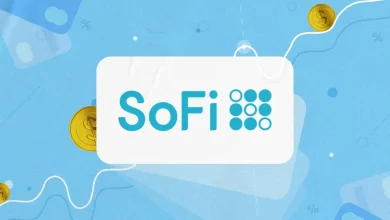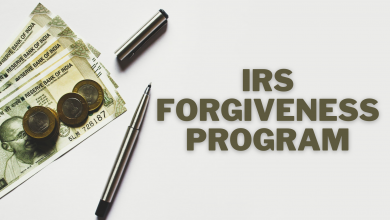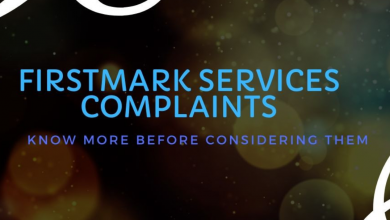Do Student Loans Go Away After 7 Years? Answer is Here

Student loan debt can seem like a never-ending cycle. With the average graduate carrying over $37,000 in student loans, it’s no wonder that more and more people are reaching out for help to get their debt under control. Thankfully there is a way out – but you need to know-how. This blog post will explore ten ways to get your student loan debt under control!
If you have federal loans, the Department of Education offers several forgiveness programs and deferment and forbearance options. Depending on your interest rate, your loan balance could double in a short time, so it’s essential to understand all of your repayment options.
If you took out private student loans, there are still options available. Private lenders offer a range of repayment plans, and many of them allow you to defer or forbear your loan payments if you run into financial difficulty.
If you are struggling with student loan debt, don’t panic! There are plenty of ways to get your debt under control. Here are our top ten tips:
Tip #01: Understand your repayment options.
The Department of Education offers a range of repayment plans for federal loans, including income-based and graduated repayment plans. If you are having trouble making your monthly payments, these plans may help.
Tip #02: Consolidate your loans.
If you have multiple federal loans, you may be able to consolidate them into a single loan. This can make your monthly payments more manageable and lower your interest rate.
Tip #03: Get help from a nonprofit credit counseling agency.
If you are struggling to keep up with your student loan payments, you may want to seek help from a nonprofit credit counseling agency. Many agencies can negotiate with your lender on your behalf, which can help you get back on track without filing for bankruptcy.
Tip #04: Take advantage of deferment or forbearance options.
Federal student loans allow borrowers to postpone their payments if they run into financial difficulty. Deferments typically last for up to 12 months, and federal loans will cover your interest costs during this time. However, you may have to pay the accrued interest on a loan if it becomes delinquent before being put into deferment.
Tip #05: Apply for income-based repayment plans.
If your monthly student loan payments are too high under standard repayment plans, you may be able to apply for an income-based repayment plan.
Tip #06: Look into student loan forgiveness programs.
If you work in public service or education and meet eligibility requirements, there are various loan forgiveness programs available to help reduce your debt. For example, teachers can qualify for the Teacher Loan Forgiveness Program or the Public Service Loan Forgiveness Program.
Tip #07: Check your credit report for errors.
If you are having trouble getting approved for a loan modification or other debt-relief program, it may be worth checking your credit report for errors. A recent study by the Federal Trade Commission found that 17% of credit reports contain significant errors, and 14% showed signs of potential fraud.
Tip #08: Talk to your lender about refinancing options.
If you have a federal student loan with an interest rate above market rates, it may be worth looking into student loan refinance options such as SoFi or Credible. These companies can offer borrowers lower interest rates and shorter terms, saving you money in the long run.
Tip #09: Try a debt management program.
If you are struggling with multiple debts, you may want to consider enrolling in a debt management program. A DMP will combine your debts into one monthly payment and negotiate with your creditors to get you a better interest rate.
Tip #10: Consider refinancing your student loans.
If you have an excellent credit score and steady income, it may be worth looking into private loan refinance options such as SoFi or Credible. These companies can offer borrowers lower interest rates and shorter terms, saving you money in the long run.

Student loan debt can be daunting, but you can get your debt under control with a little bit of planning and perseverance. For more information on student loan repayment options, visit the Department of Education website or contact a credit counseling agency today.
FAQ
Do student loans go away after seven years?
100% of student loan debt goes away after 13 years and 11 months if you are on an income-based repayment plan. If you do not want to be involved in any additional stress or worry about your loans, then do what it takes to get them under control.
How long do student loans stay on your credit?
Student loans do not stay on your credit report for very long. It only remains there from five to seven years after you have made a payment or been delinquent in costs.
How do student loan deferments work?
Except for subsidized Stafford Loans, federal student loans do not accrue interest while enrolled at least half-time in school. However, if you do not make payments while your loans are deferred, the claim will continue to build until it is capitalized (added to principal). This can increase your loan balance substantially over time.
What do I need for forbearance?
To qualify for a deferment or forbearance on federal student loans, you must meet specific requirements. It would help if you generally were enrolled in school or have a job that qualifies for unemployment benefits. For more information on deferment and forbearance, visit the Department of Education website.
What are my options if I can’t make my student loan payments?
If you cannot make your monthly student loan payments, do not panic. There are several options available to you, including deferment and forbearance. You can also apply for student loan forgiveness programs or enroll in an income-based repayment plan with your lender.
What is the Public Service Loan Forgiveness Program?
The Public Service Loan Forgiveness Program (PSLF) is a government program that forgives the student loans of borrowers who work in public service jobs for ten years. To qualify, you must be enrolled in an income-based repayment plan and make 120 qualifying payments.
What are the different types of student loan forgiveness?
Several student loan forgiveness programs are available to borrowers, including the Public Service Loan Forgiveness Program and the Teacher Loan Forgiveness Program. To qualify for these programs, you must meet specific requirements, such as making 120 qualifying payments or teaching for five years.
What is student loan consolidation?
Student loan consolidation is the process of combining all of your federal student loans into one new loan with a new interest rate and repayment term. This can be a useful option if you struggle to keep track of multiple monthly payments.
What is student loan rehabilitation?
Student loan rehabilitation is the process of bringing a federal student loan out of default and into good standing. To do this, you must make nine consecutive on-time payments and agree to a new repayment plan.
What is student loan deferment?
Student loan deferment allows borrowers with federal and private loans to pause their payments for various periods, including during the summer, when they do not have classes, or on other occasions that might affect their ability to make timely payments.
How do you get your student loans out of default?
If you do not make on-time payments for 270 days, your student loans are considered a default. To get your federal or private student loans out of default and back into good standing, you must agree to a new repayment plan with the lender.
What is deferment?
A loan that has gone into deferment has allowed the government to stop payments for a certain amount of time. The student will still have interest building upon the loan, and if it’s not paid during the deferment period, it can be capitalized-added onto the principal balance when the deferment is over.







